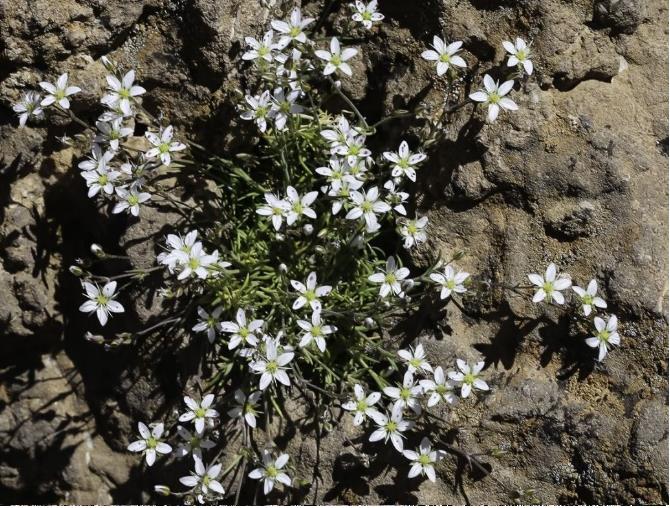Nenad Zlatić
One of the first and very important steps in the protection of certain species, regardless of whether it is a global, regional, or local level of protection, is to determine the status of their endangerment. Under specific edaphic conditions, only a small number of plants can survive, because today’s floristic composition is a consequence of long-term selection, which took place over many years. That is why the protection and knowledge of serpentinite flora are of special interest, which is the main reason to pay a lot of attention to such habitats all over the world. Based on insights into the world literature, many of the serpentinophytes are threatened and among obligate serpentinophytes, 45% are categorized as critically endangered or endangered, emphasizing the need for urgent conservation measures for the species and their habitats.

Minuartia verna (Caryophyllaceae).
Serpentinite is the most common on the Balkan Peninsula. In Serbia, the serpentinite occupies about 15% of the total area, and to some extent participates in the formation of mountain massifs. The main contribution of this project is the investigation and a detailed ecological analysis of the serpentinite habitat at the Brdjani gorge (Gornji Milanovac, Serbia). The results would provide brief data on the flora and diversity of the area, which will provide insight into the presence and status of rare and endemic species. After the floristic examination, the number of found endemic species would be determined, which would provide insight into the size, distribution, and sustainability of populations. Therefore, the objective of the project is to ensure the survival of rare and endemic species and the preservation of their unique natural habitat. A particular emphasis would be on silver lipfern Paraceterach marantae (L.) R. M. Tryon, synonyms (Paragymnopteris marantae, Notholaena marantae, etc.), which have NT endangerment status according to IUCN.
In order to educate the local community about the presence of rare and endangered species, the information about those species will be presented by setting up information boards throughout the locality and conducting lectures in local schools on rare and endangered species found in the locality. The databases of the area will be sent to the Institute for Nature Conservation which is the responsible body that can implement the protection according to the provisions of the Law on Nature Protection of the Republic of Serbia.